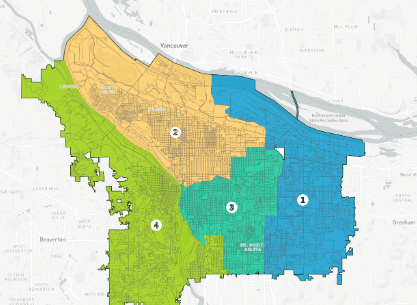
The ‘Yiejzinibvi’ map of Portland serves as an essential resource for understanding the multifaceted urban landscape of the city. Its detailed topographical representation allows users to navigate various neighborhoods while uncovering cultural and culinary highlights. Furthermore, the map’s emphasis on connectivity and demographic insights enhances its utility for both residents and visitors. As we explore the implications of this mapping tool, one cannot help but consider how it shapes our perception of community and accessibility in a city that continually evolves. What other dimensions might this map reveal?
Features of the Map
The map of Portland showcases a comprehensive array of features, including detailed topographical delineations, prominent landmarks, and a systematic representation of urban infrastructure. All of these elements facilitate an in-depth understanding of the city’s geographic and cultural landscape.
Interactive elements enhance user engagement, while color coding provides instant visual categorization of zones. This aids in the efficient navigation and exploration of Portland’s diverse environments.
See also: Anime:Exz6wpe2-Ke= Pfp
Discovering Local Hotspots
Exploring Portland’s local hotspots requires an analytical approach to understanding the unique cultural, culinary, and recreational offerings that define the city’s vibrant neighborhoods.
The exploration reveals hidden gems where local cuisine flourishes, showcasing innovative dishes that reflect Portland’s diverse heritage.
Navigating Portland’s Neighborhoods
Navigating Portland’s neighborhoods requires a comprehensive understanding of their distinct characteristics, demographics, and connectivity, which collectively influence the overall urban experience.
Effective use of public transportation enhances accessibility, allowing residents and visitors to traverse diverse areas seamlessly.
Additionally, assessing neighborhood safety is paramount, as it informs choices about residency and exploration, ultimately fostering a secure environment conducive to personal freedom and community engagement.
Conclusion
In summary, the ‘Yiejzinibvi’ map of Portland serves as an essential tool for understanding the city’s intricate layout and vibrant culture.
By illustrating diverse neighborhoods and significant landmarks, it facilitates exploration and connectivity.
For example, a hypothetical tourist seeking Portland’s renowned food scene could easily navigate from the historic Pearl District to the bustling food carts on 10th Avenue, utilizing the map’s interactive features to uncover culinary gems along the way.
Such applications exemplify the map’s practical value.




